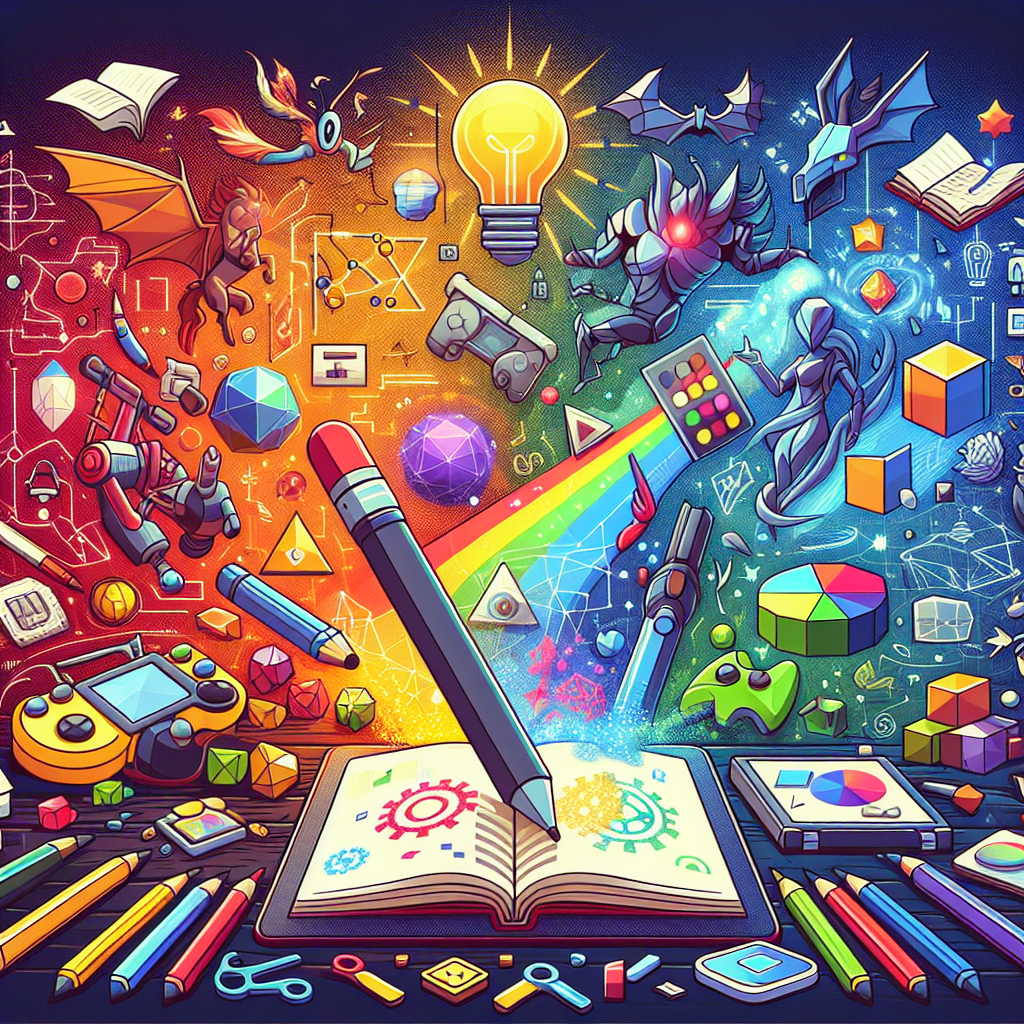Visual Magic: Game Art and Design Tutorials for Future Developers
The world of game development is a vibrant realm where art and technology intertwine to create immersive experiences. As gaming continues to flourish, the demand for skilled artists and designers has never been higher. Recognizing this need, a wealth of resources has emerged to empower the next generation of game developers. Among them, game art and design tutorials serve as a critical bridge, equipping aspiring creators with the skills to bring their imaginative visions to life.
The Importance of Game Art and Design
Game art and design are not just about creating visually appealing graphics; they are essential components that shape the overall gaming experience. Players interpret the game’s story, mechanics, and atmosphere through visual elements. High-quality artwork contributes to player engagement, emotional connection, and overall enjoyment. Therefore, understanding the principles of game art and design is crucial for any budding developer aiming to make their mark in the industry.
Foundations of Game Art: Essential Tutorials
1. Color Theory and Composition
Understanding color theory is fundamental for creating visually appealing game art. Tutorials focusing on color palettes, contrast, and harmony help artists choose the right colors to evoke emotions and set the mood for their games. Additionally, composition tutorials teach the balance of elements within a frame, guiding artists on how to lead a player’s eye and enhance storytelling through visuals.
2. Character Design Basics
A character often embodies a game’s spirit, and tutorials on character design are vital for developers who wish to create memorable and relatable characters. These tutorials often cover anatomy basics, stylization techniques, and the importance of backstory in influencing visual design. By mastering character design, developers can create protagonists and antagonists that resonate with players.
3. Environment Art Creation
The environment of a game can transport players to fantastical worlds or realistic settings. Tutorials on environment art provide guidance on creating immersive landscapes, from conceptual sketches to fully realized 3D models. Learning about texture creation, lighting, and atmospheric effects is crucial for making environments that feel alive and responsive.
4. Animation Principles
Animation is a magical element of games that brings characters and environments to life. As such, tutorials focusing on the principles of animation—like timing, spacing, and movement—are indispensable. Future developers can learn to create fluid animations that enhance gameplay and storytelling, ultimately leading to a more engaging player experience.
Game Design: Poised for Innovation
While visual artistry is essential, understanding game design principles is equally critical for developers. Game design tutorials delve into mechanics, gameplay balancing, and user experience, ensuring that creations are not only beautiful but also fun to play.
1. Game Mechanics and Systems Design
Tutorials focusing on game mechanics educate developers about crafting engaging gameplay loops. They cover everything from core mechanics to reward systems, helping aspiring developers understand how to keep players motivated and invested in the game.
2. Level Design Fundamentals
Level design is where visual art meets gameplay. Tutorials in this area emphasize how to create levels that challenge and intrigue players while fostering exploration. Learning to design levels that align with the game’s narrative and mechanics is vital for a cohesive gaming experience.
3. User Interface (UI) and User Experience (UX)
The user interface and user experience are often overlooked but are key elements of game design. Tutorials that focus on UI/UX help developers create intuitive menus, health bars, and other interface components that enhance playability. Understanding how players interact with a game can directly influence its success.
Finding Your Resources
The internet is awash with resources for game art and design. Platforms such as YouTube, dedicated online courses, forums, and game development communities provide an array of tutorials tailored to different skill levels. Websites like Udemy, Coursera, and Gumroad host structured courses that often come with feedback from experienced developers, offering invaluable guidance.
Additionally, many game engines, such as Unity and Unreal Engine, offer their own learning resources, including documentation, sample projects, and tutorials specifically geared towards their platforms. Engaging with these resources can help aspiring developers stay updated with current trends and technologies.
Building a Portfolio
As aspiring developers learn and hone their skills, building a portfolio is essential for showcasing their work. A strong portfolio not only demonstrates technical capabilities but also highlights creativity and diversity of style. Developers should consider including a mix of sketches, final pieces, animations, and game prototypes to present their range and talent.
Conclusion
In a world increasingly shaped by technology and creativity, the intersection of game art and design offers boundless opportunities for future developers. By engaging with comprehensive tutorials that cover the essential components of game creation, aspiring artists and designers can cultivate their skills and prepare for a rewarding career in the gaming industry. As they embark on this journey, the possibility to create their own visual magic lies at their fingertips—waiting to be unleashed in the ever-evolving landscape of video games.




